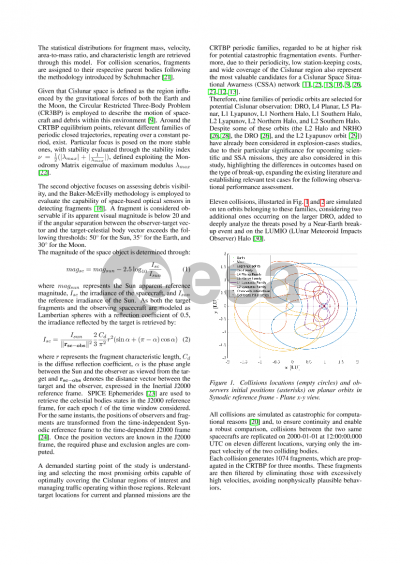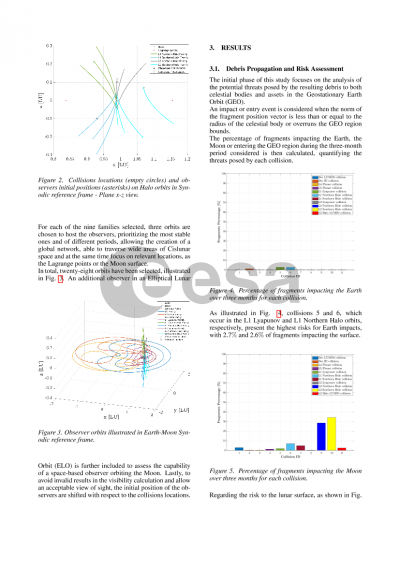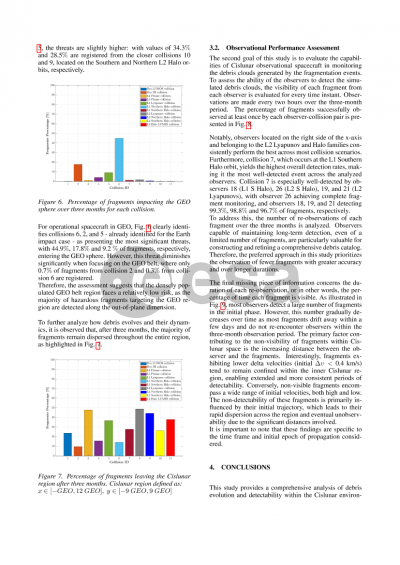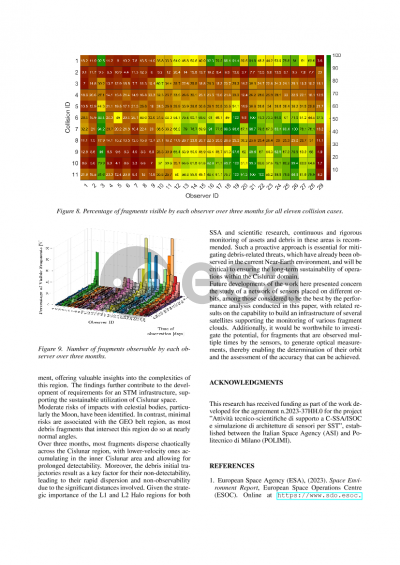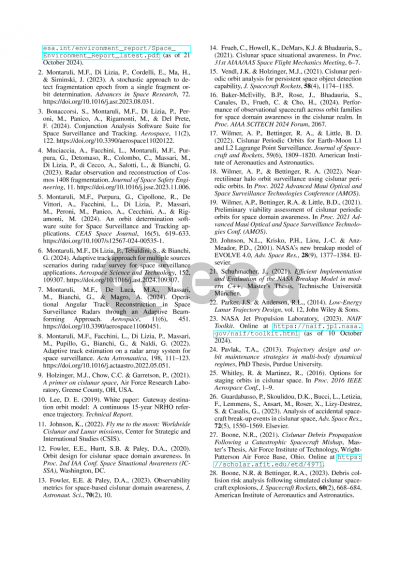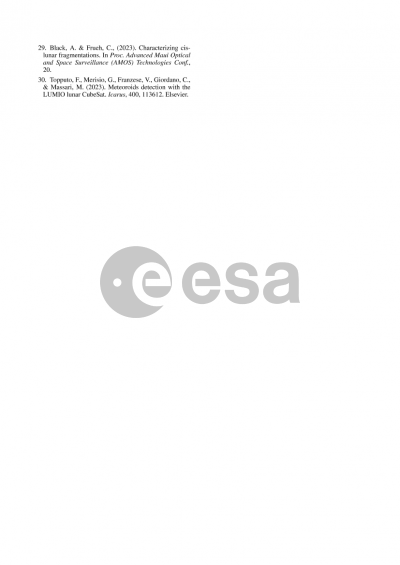Document details

Abstract
Over the past decades lunar missions have increased, driven by the Moon appeal in scientific, military and commercial sectors. For this reason, more spacecrafts are expected to operate in or transit through the Cislunar region, between the Earth and the Moon. The expected increase in space traffic raises the likelihood of collision events, generating fragments that could disperse chaotically throughout the region. To safeguard future missions, there is a growing need for timely and accurate data to assess risks, prevent further space debris proliferation and, if necessary, implement countermeasures. This task is performed by exploiting a Space Traffic Management (STM) infrastructure, capable of tracking space objects through a network of sensors. However, such an asset, devoted to the Cislunar region, does not exist yet, and the current STM sensors, either located on Earth or in geocentric orbits, are insufficient to operationally meet on a large scale the specific demands of Cislunar Space Situational Awareness (SSA), leaving a critical gap in monitoring this strategic region. Currently, the only option is to rely on passive electro-optical sensors strategically placed to cover critical regions. Several authors evaluated the observational capability of promising Cislunar orbits in monitoring single targets on specific trajectories; however, no studies to date applied this analysis to fragments clouds. This work addresses this gap by analysing ten Cislunar fragmentation events and assessing the performance of various Cislunar orbital families in detecting debris clouds over time.
Ten catastrophic collisions, distributed throughout the entire region, are simulated through the NASA Standard Breakup Model. The resulting fragments are propagated in the three-body dynamical framework over a three-month time window, and the risks posed to the Earth, the Moon, and operational spacecrafts in Geostationary Orbit (GEO) are assessed. Twenty-eight observer orbits in periodic Cislunar and lunar families are opportunely selected for their relevance to scientific and SSA purposes, and capability to comprehensively cover the region. For each observation, the visibility of each fragment from each observer is evaluated. A fragment is visible if magnitude and celestial bodies occultation constraints are simultaneously satisfied. Orbits capable of maintaining extended periods of visibility are selected as promising candidates, as they are ideal for constructing, maintaining, and refining a debris orbital catalogue.
Based on the simulations, moderate risks to celestial bodies and no threats for the GEO belt result from the debris clouds. The L2 Halos emerge as the most promising family for debris monitoring, detecting the highest number of fragments and for the longest duration. The vast distances within the Cislunar region, along with occasional obstructions by celestial bodies, represent the main reason for fragments non-visibility. Interestingly, the top-performing orbits coincide with key locations prioritized by many upcoming missions for their scientific importance and stability. Therefore, given the possible proliferation of debris in Cislunar region, particular care must be taken in the design of such missions to meet the STM requirements for a sustainable use of the Cislunar environment.
Preview

